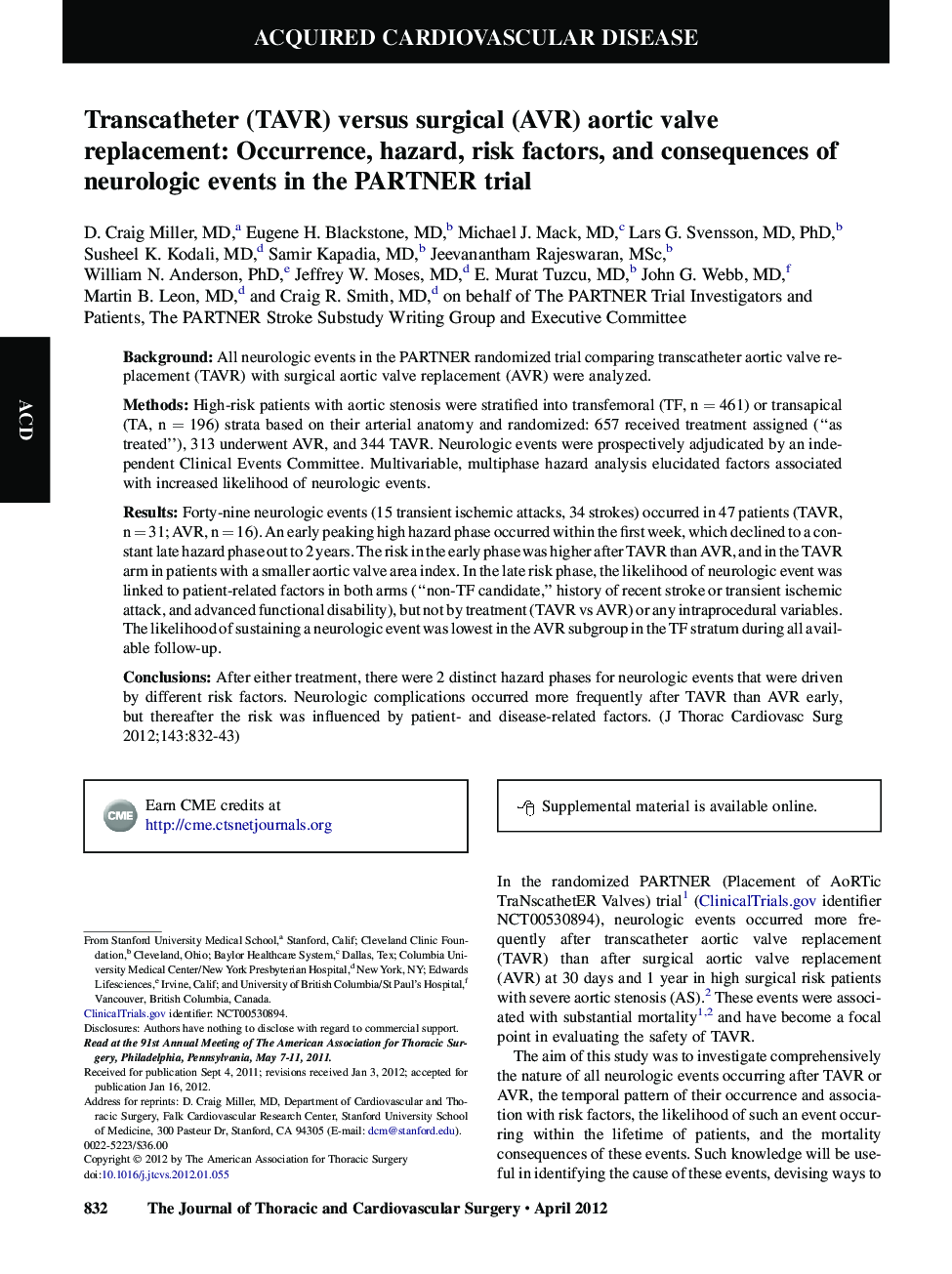| کد مقاله | کد نشریه | سال انتشار | مقاله انگلیسی | نسخه تمام متن |
|---|---|---|---|---|
| 5990424 | 1578637 | 2012 | 25 صفحه PDF | دانلود رایگان |

BackgroundAll neurologic events in the PARTNER randomized trial comparing transcatheter aortic valve replacement (TAVR) with surgical aortic valve replacement (AVR) were analyzed.MethodsHigh-risk patients with aortic stenosis were stratified into transfemoral (TF, n = 461) or transapical (TA, n = 196) strata based on their arterial anatomy and randomized: 657 received treatment assigned (“as treated”), 313 underwent AVR, and 344 TAVR. Neurologic events were prospectively adjudicated by an independent Clinical Events Committee. Multivariable, multiphase hazard analysis elucidated factors associated with increased likelihood of neurologic events.ResultsForty-nine neurologic events (15 transient ischemic attacks, 34 strokes) occurred in 47 patients (TAVR, n = 31; AVR, n = 16). An early peaking high hazard phase occurred within the first week, which declined to a constant late hazard phase out to 2 years. The risk in the early phase was higher after TAVR than AVR, and in the TAVR arm in patients with a smaller aortic valve area index. In the late risk phase, the likelihood of neurologic event was linked to patient-related factors in both arms (“non-TF candidate,” history of recent stroke or transient ischemic attack, and advanced functional disability), but not by treatment (TAVR vs AVR) or any intraprocedural variables. The likelihood of sustaining a neurologic event was lowest in the AVR subgroup in the TF stratum during all available follow-up.ConclusionsAfter either treatment, there were 2 distinct hazard phases for neurologic events that were driven by different risk factors. Neurologic complications occurred more frequently after TAVR than AVR early, but thereafter the risk was influenced by patient- and disease-related factors.
Journal: The Journal of Thoracic and Cardiovascular Surgery - Volume 143, Issue 4, April 2012, Pages 832-843.e13